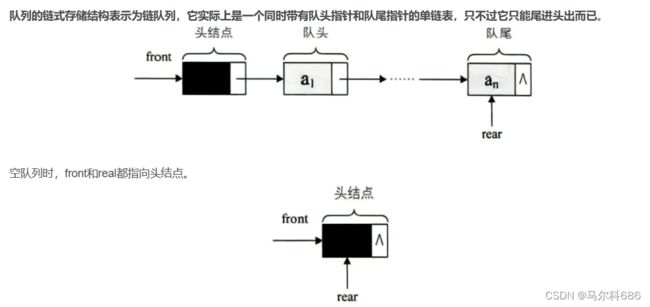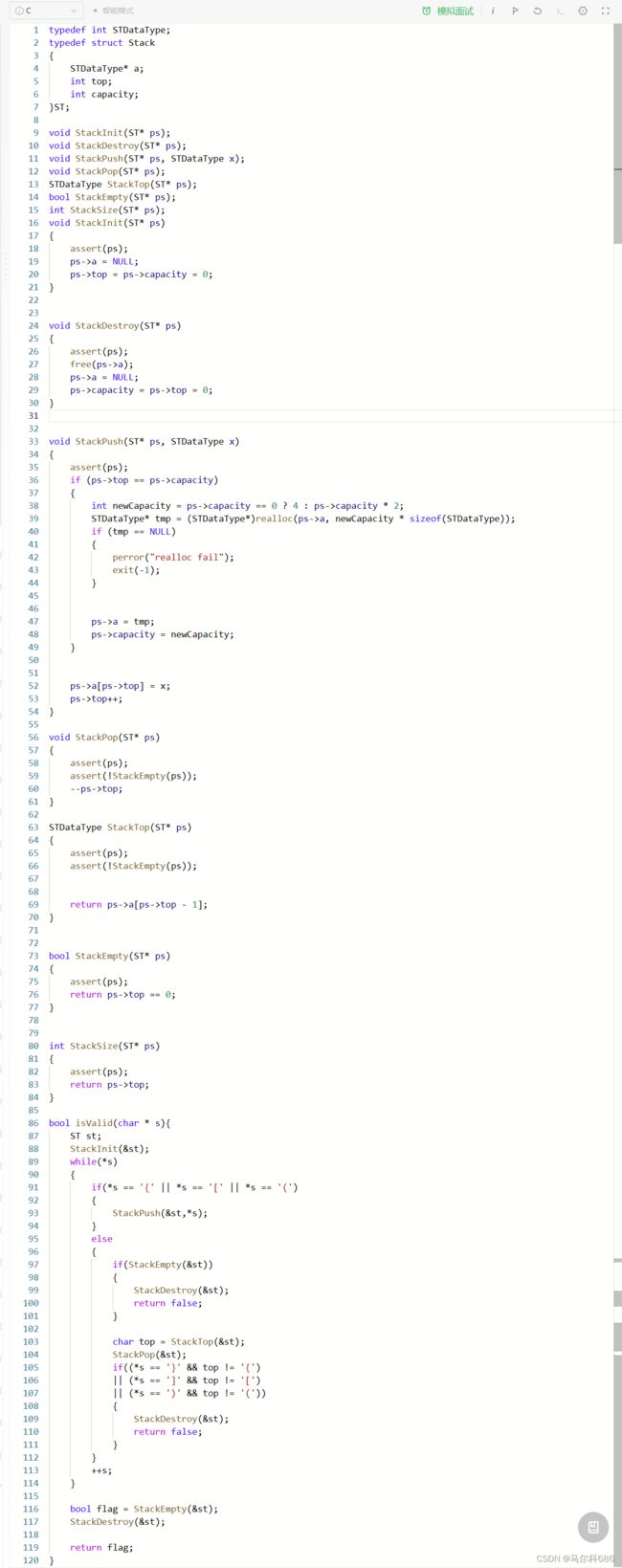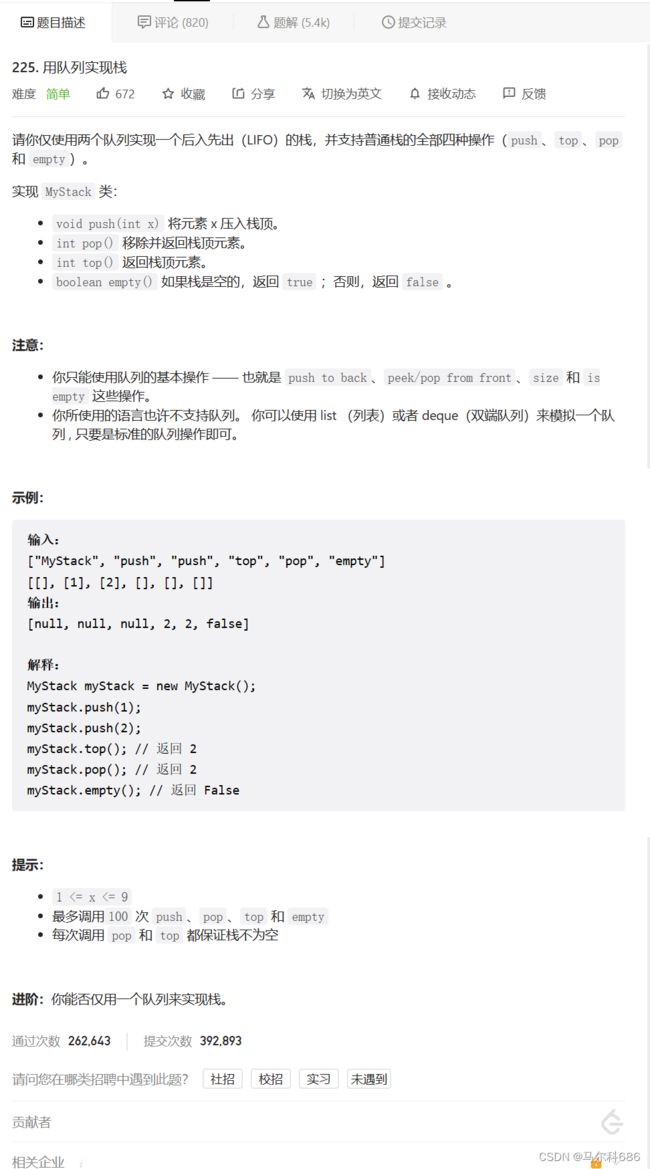【数据结构】栈和队列 (栈 栈的概念结构 栈的实现 队列 队列的概念及结构 队列的实现 栈和队列面试题)
文章目录
- 前言
- 一、栈
-
- 1.1 栈的概念结构
- 1.2栈的实现
- 二、队列
-
- 2.1队列的概念及结构
- 2.2队列的实现
- 三、栈和队列面试题
- 总结
前言
一、栈
1.1 栈的概念结构
栈也是一种线性表,数据在逻辑上挨着存储。只允许在固定的一端进行插入和删除元素。进行插入和删除操作的一端叫栈顶,另一端叫栈底。符合LIFO 先进后出。
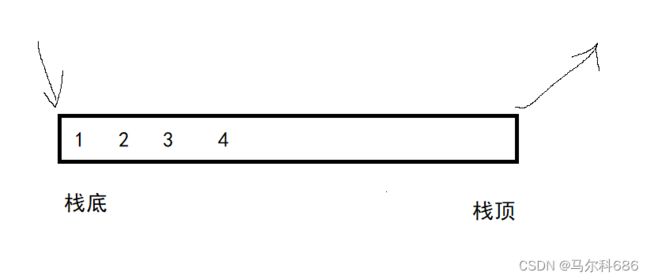
压栈:插入操作。
出栈:删除操作。
1.2栈的实现
栈的实现用数组实现更好,因为完美符合数组的尾插尾删。
数组的缓存利用率高一点。

小练习:
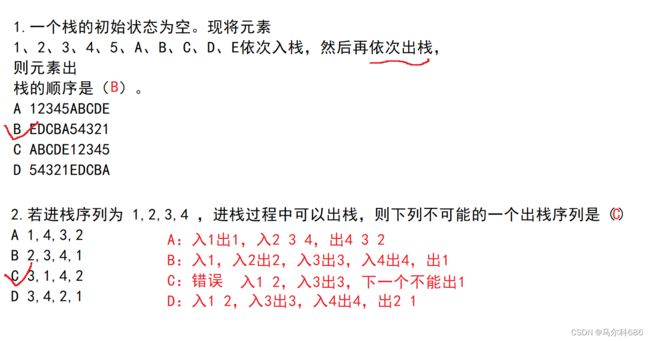
支持动态增长的栈:
typedef int STDataType;
typedef struct Stack
{
STDataType* _a;
int _top; // 栈顶
int _capacity; // 容量
}Stack;
初始化栈:
void StackInit(ST* ps)
{
assert(ps);
ps->a = NULL;
ps->top = ps->capacity = 0;
}
入栈:进栈(栈的插入操作),若栈未满,则将x加入使之成为新栈顶。
void StackPush(ST* ps, STDataType x)
{
assert(ps);
if (ps->top == ps->capacity)
{
int newCapacity = ps->capacity == 0 ? 4 : ps->capacity * 2;
STDataType* tmp = (STDataType*)realloc(ps->a, newCapacity * sizeof(STDataType));
if (tmp == NULL)
{
perror("realloc fail");
exit(-1);
}
ps->a = tmp;
ps->capacity = newCapacity;
}
ps->a[ps->top] = x;
ps->top++;
}
出栈:出栈(栈的删除操作),若栈非空,则弹出栈顶元素,并用x返回。
void StackPop(ST* ps)
{
assert(ps);
assert(!StackEmpty(ps));
--ps->top;
}
获取栈顶元素:
STDataType StackTop(ST* ps)
{
assert(ps);
assert(!StackEmpty(ps));
return ps->a[ps->top - 1];
}
获取栈中有效元素个数:
int StackSize(ST* ps)
{
assert(ps);
return ps->top;
}
销毁栈:栈销毁,并释放占用的存储空间
void StackDestroy(ST* ps)
{
assert(ps);
free(ps->a);
ps->a = NULL;
ps->capacity = ps->top = 0;
}
检测栈是否为空,如果为空返回非零结果,如果不为空返回0:
bool StackEmpty(ST* ps)
{
assert(ps);
return ps->top == 0;
}
Stack.h
#pragma once
#includeStack.c
#include "Stack.h"
void StackInit(ST* ps)
{
assert(ps);
ps->a = NULL;
ps->top = ps->capacity = 0;
}
void StackDestroy(ST* ps)
{
assert(ps);
free(ps->a);
ps->a = NULL;
ps->capacity = ps->top = 0;
}
void StackPush(ST* ps, STDataType x)
{
assert(ps);
if (ps->top == ps->capacity)
{
int newCapacity = ps->capacity == 0 ? 4 : ps->capacity * 2;
STDataType* tmp = (STDataType*)realloc(ps->a, newCapacity * sizeof(STDataType));
if (tmp == NULL)
{
perror("realloc fail");
exit(-1);
}
ps->a = tmp;
ps->capacity = newCapacity;
}
ps->a[ps->top] = x;
ps->top++;
}
void StackPop(ST* ps)
{
assert(ps);
assert(!StackEmpty(ps));
--ps->top;
}
STDataType StackTop(ST* ps)
{
assert(ps);
assert(!StackEmpty(ps));
return ps->a[ps->top - 1];
}
bool StackEmpty(ST* ps)
{
assert(ps);
return ps->top == 0;
}
int StackSize(ST* ps)
{
assert(ps);
return ps->top;
}
二、队列
2.1队列的概念及结构
队列:只允许在一端进行插入数据操作,在另一端进行删除数据操作的特殊线性表,队列具有先进先出FIFO(First In First Out)
入队列:进行插入操作的一端称为队尾。
出队列:进行删除操作的一端称为队头。
2.2队列的实现
队列用链表的结构实现更优
链式结构:表示队列
typedef struct QListNode
{
struct QListNode* _pNext;
QDataType _data;
}QNode;
队列的结构:
typedef struct Queue
{
QNode* head;
QNode* tail;
int size;
}Queue;
初始化队列:
void QueueInit(Queue* pq)
{
assert(pq);
pq->head = pq->tail = NULL;
pq->size = 0;
}
队尾入队列:
void QueuePush(Queue* pq, QDataType x)
{
assert(pq);
QNode* newnode = (QNode*)malloc(sizeof(QNode));
if (newnode == NULL)
{
perror("malloc fail");
exit(-1);
}
else
{
newnode->data = x;
newnode->next = NULL;
}
if (pq->tail == NULL)
{
pq->head = pq->tail = newnode;
}
else
{
pq->tail->next = newnode;
pq->tail = newnode;
}
pq->size++;
}
队头出队列:
void QueuePop(Queue* pq)
{
assert(pq);
assert(!QueueEmpty(pq));
if (pq->head->next == NULL)
{
free(pq->head);
pq->head = pq->tail = NULL;
}
else
{
QNode* del = pq->head;
pq->head = pq->head->next;
free(del);
del = NULL;
}
pq->size--;
}
获取队列头部元素:
QDataType QueueFront(Queue* pq)
{
assert(pq);
assert(!QueueEmpty(pq));
return pq->head->data;
}
获取队列队尾元素:
QDataType QueueBack(Queue* pq)
{
assert(pq);
assert(!QueueEmpty(pq));
return pq->tail->data;
}
获取队列中有效元素个数:
int QueueSize(Queue* pq)
{
assert(pq);
return pq->size;
}
检测队列是否为空,如果为空返回非零结果,如果非空返回0:
bool QueueEmpty(Queue* pq)
{
assert(pq);
return pq->head == NULL && pq->tail == NULL;
}
销毁队列:
void QueueDestroy(Queue* pq)
{
assert(pq);
QNode* cur = pq->head;
while (cur)
{
QNode* del = cur;
cur = cur->next;
free(del);
}
pq->head = pq->tail = NULL;
}
Queue.h
#pragma once
#include Queue.c
#include"Queue.h"
void QueueInit(Queue* pq)
{
assert(pq);
pq->head = pq->tail = NULL;
pq->size = 0;
}
void QueueDestroy(Queue* pq)
{
assert(pq);
QNode* cur = pq->head;
while (cur)
{
QNode* del = cur;
cur = cur->next;
free(del);
}
pq->head = pq->tail = NULL;
}
void QueuePush(Queue* pq, QDataType x)
{
assert(pq);
QNode* newnode = (QNode*)malloc(sizeof(QNode));
if (newnode == NULL)
{
perror("malloc fail");
exit(-1);
}
else
{
newnode->data = x;
newnode->next = NULL;
}
if (pq->tail == NULL)
{
pq->head = pq->tail = newnode;
}
else
{
pq->tail->next = newnode;
pq->tail = newnode;
}
pq->size++;
}
void QueuePop(Queue* pq)
{
assert(pq);
assert(!QueueEmpty(pq));
if (pq->head->next == NULL)
{
free(pq->head);
pq->head = pq->tail = NULL;
}
else
{
QNode* del = pq->head;
pq->head = pq->head->next;
free(del);
del = NULL;
}
pq->size--;
}
QDataType QueueFront(Queue* pq)
{
assert(pq);
assert(!QueueEmpty(pq));
return pq->head->data;
}
QDataType QueueBack(Queue* pq)
{
assert(pq);
assert(!QueueEmpty(pq));
return pq->tail->data;
}
bool QueueEmpty(Queue* pq)
{
assert(pq);
return pq->head == NULL && pq->tail == NULL;
}
int QueueSize(Queue* pq)
{
assert(pq);
return pq->size;
}
三、栈和队列面试题
题目链接:
1.https://leetcode.cn/problems/valid-parentheses/
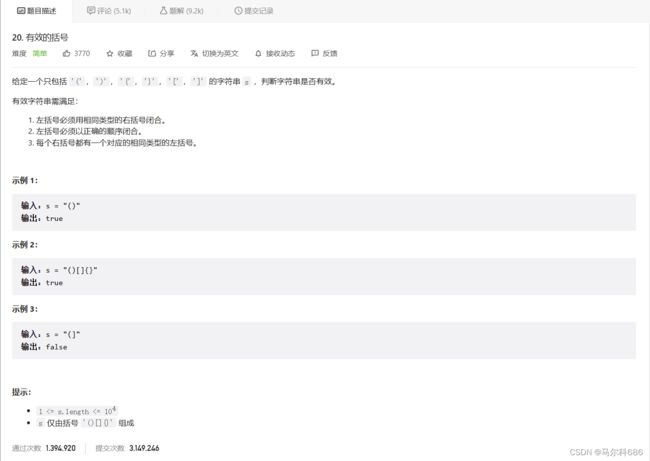
题目链接:
2.https://leetcode.cn/problems/implement-stack-using-queues/
